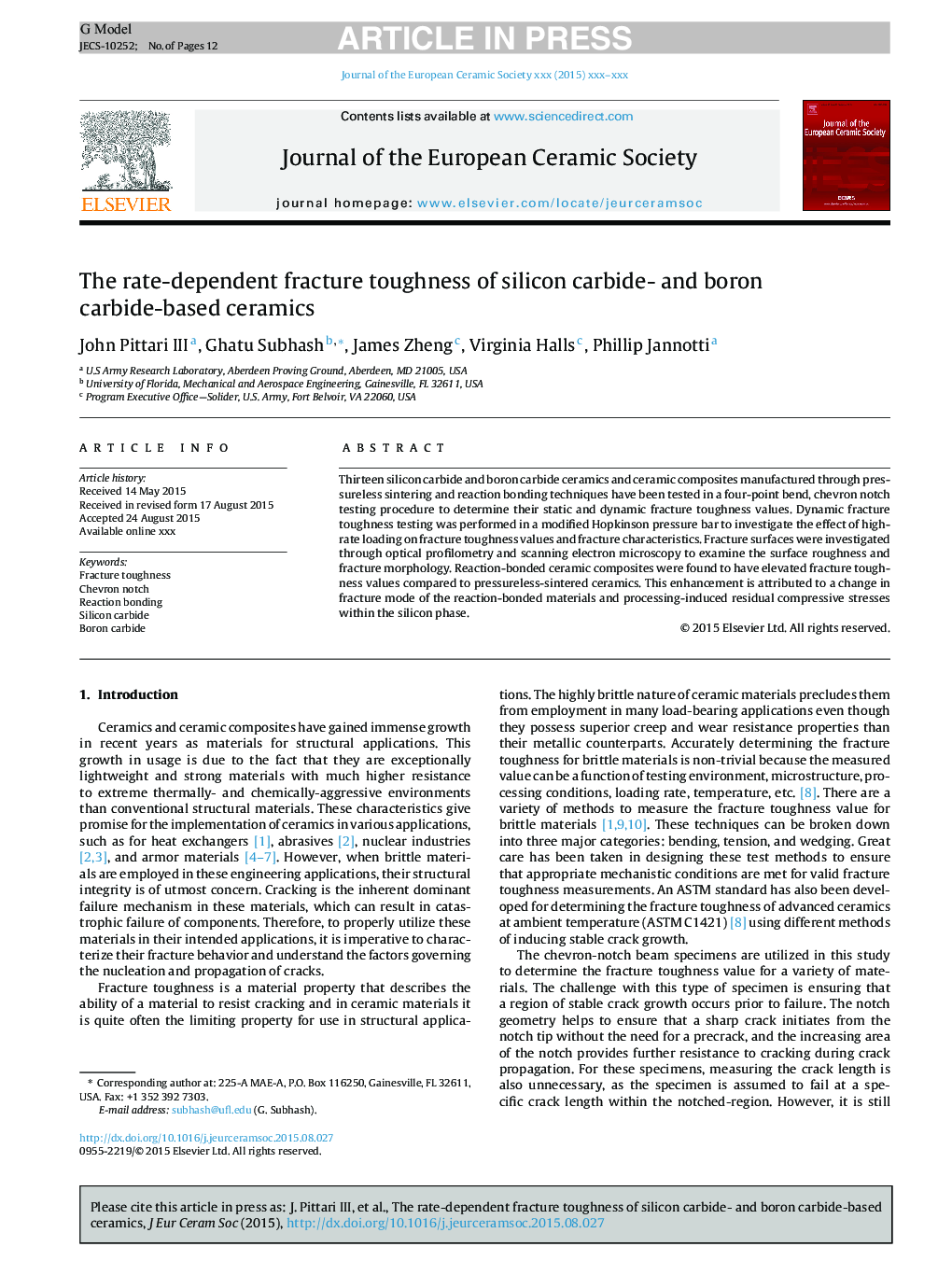| Article ID | Journal | Published Year | Pages | File Type |
|---|---|---|---|---|
| 10629492 | Journal of the European Ceramic Society | 2015 | 12 Pages |
Abstract
Thirteen silicon carbide and boron carbide ceramics and ceramic composites manufactured through pressureless sintering and reaction bonding techniques have been tested in a four-point bend, chevron notch testing procedure to determine their static and dynamic fracture toughness values. Dynamic fracture toughness testing was performed in a modified Hopkinson pressure bar to investigate the effect of high-rate loading on fracture toughness values and fracture characteristics. Fracture surfaces were investigated through optical profilometry and scanning electron microscopy to examine the surface roughness and fracture morphology. Reaction-bonded ceramic composites were found to have elevated fracture toughness values compared to pressureless-sintered ceramics. This enhancement is attributed to a change in fracture mode of the reaction-bonded materials and processing-induced residual compressive stresses within the silicon phase.
Related Topics
Physical Sciences and Engineering
Materials Science
Ceramics and Composites
Authors
John III, Ghatu Subhash, James Zheng, Virginia Halls, Phillip Jannotti,
